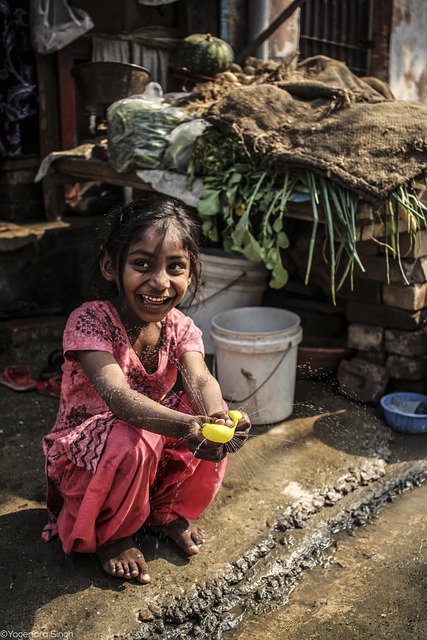Child welfare is a complex field focused on safeguarding and enhancing the well-being of children. Challenges like neglect, abuse, and lack of educational access can severely impact their future. Effective strategies include implementing child advocacy programs that offer legal aid (juvenile legal advocacy), educational resources, safe spaces, and prevention measures like raising awareness about child abuse and promoting positive parenting skills. These efforts aim to create a culture prioritizing children's well-being and supporting at-risk populations. Tailored programs integrating healthcare, education, and legal services are crucial in preventing abuse and fostering development. A multi-faceted approach involving education, legal advocacy, safety measures, and community awareness is essential for long-term improvements in child welfare services, ensuring protected rights and empowered decisions for all children.
In today’s digital era, enhancing and ensuring child welfare services is more crucial than ever. This article explores the creation of sustainable child advocacy programs aimed at long-term improvement. We delve into the scope of child welfare and its challenges, providing insights on fostering child development, protecting children’s rights, and preventing abuse. Through effective strategies, we discuss supporting vulnerable children, advocating for legal protections, and implementing safety measures to create a better future for all children.
Understanding the Scope: Child Welfare and Its Challenges
Child welfare is a multifaceted field that encompasses various services aimed at protecting and promoting the well-being of children. It involves ensuring their safety, health, and overall development while also advocating for their rights. However, navigating the complex challenges within this domain is essential to bring about lasting change. Many children face vulnerabilities such as neglect, abuse, or lack of access to quality education, which can significantly impact their future prospects.
To address these issues effectively, child advocacy programs must be implemented and tailored to support at-risk populations. This includes providing legal aid through juvenile legal advocacy, offering educational resources to uphold child education rights, and creating safe spaces for vulnerable children. By focusing on prevention strategies, such as raising awareness about child abuse and promoting positive parenting skills, we can foster a culture that prioritizes the well-being of our youngest members.
Designing Effective Child Advocacy Programs
Creating effective child advocacy programs is paramount in achieving long-term improvements in child welfare services. These initiatives focus on protecting children’s rights and providing support for vulnerable children, ensuring their safety and fostering their development. By implementing comprehensive strategies, such as juvenile legal advocacy and education on child abuse prevention, these programs aim to break down existing barriers and create a more nurturing environment for children in need.
Child welfare advocates play a crucial role in navigating complex systems and advocating for policies that promote the well-being of children. They work tirelessly to ensure that every child has access to quality education, healthcare, and legal representation, ultimately empowering them to reach their full potential. Through collaborative efforts involving government bodies, non-profit organizations, and community members, these programs strive to create a sustainable impact, fostering a society where all children are valued, protected, and encouraged to thrive.
Strategies for Supporting Vulnerable Children and Preventing Abuse
Creating sustainable programs focused on child welfare involves implementing tailored strategies to support vulnerable children and prevent abuse. Child advocacy programs that integrate comprehensive services are vital in safeguarding at-risk youth. These initiatives can include multidisciplinary teams collaborating with healthcare professionals, educators, and legal advocates to provide holistic care. By addressing immediate needs and fostering child development, these programs disrupt the cycle of trauma and potential child abuse.
Protecting children’s rights through strong juvenile legal advocacy ensures that vulnerable populations receive the necessary support and resources. Educating both communities and at-risk youth about their education rights and the available safety nets empowers them to make informed decisions. Equally important is raising awareness about recognizing and reporting child abuse, enabling everyone to play a role in ensuring child safety and promoting a culture of care and prevention.
Ensuring Long-Term Impact: Education, Legal Advocacy, and Safety Measures
Ensuring long-term impact is paramount when designing sustainable programs for child welfare improvement. Education plays a pivotal role by equipping both children and adults with knowledge about their rights, responsibilities, and signs of potential abuse or neglect. This empowers communities to proactively protect vulnerable children and foster a culture of awareness and support. Additionally, legal advocacy is essential to safeguard children’s rights, ensuring that the legal system provides justice and prevents future harm.
Beyond education and advocacy, implementing robust safety measures is critical. This includes strict protocols for reporting child abuse, rapid response systems, and comprehensive support services for affected children. By integrating these components, child welfare programs can create a resilient framework that not only addresses immediate needs but also fosters healthy development and protects children’s rights in the long term.
Creating sustainable programs that holistically address child welfare is a multifaceted endeavor. By intertwining effective child advocacy, targeted support for vulnerable populations, and robust strategies to prevent abuse, we can foster a safer, more nurturing environment for children. Investing in education, legal advocacy, and comprehensive safety measures ensures long-term positive outcomes, ultimately upholding and enhancing the rights of our youngest members within society. Through these concerted efforts, we move closer to a future where every child enjoys the security and opportunities necessary for their full development.
